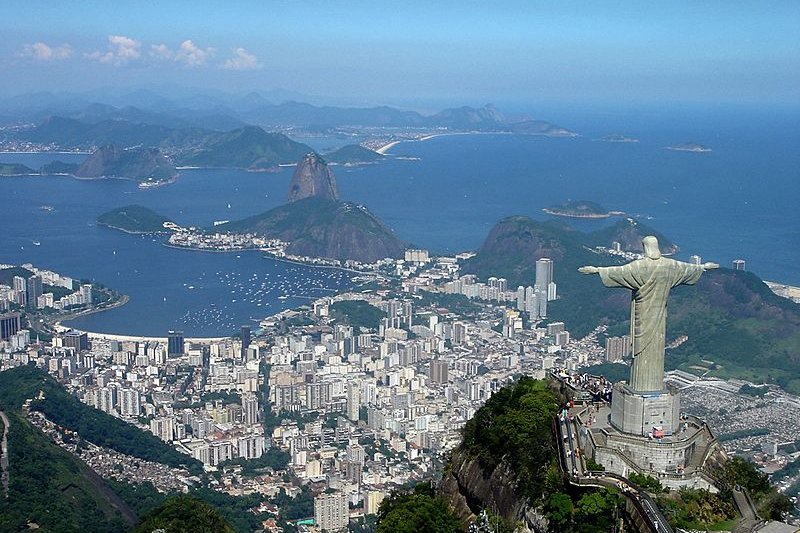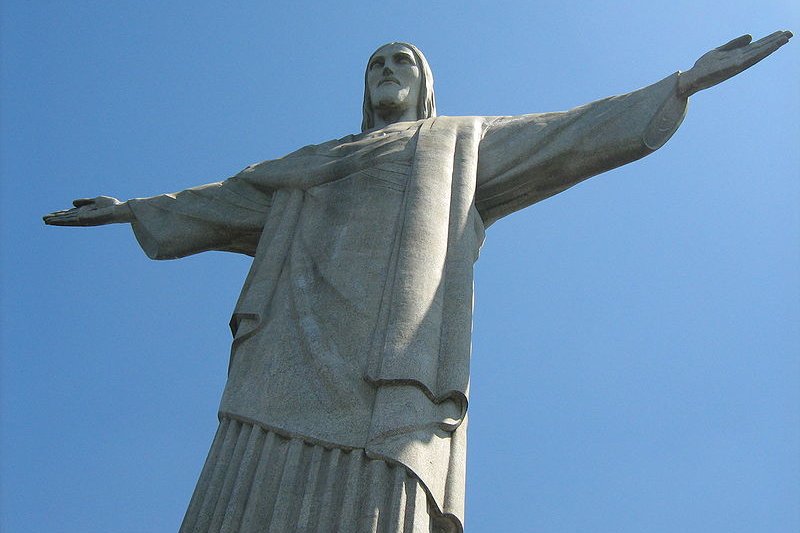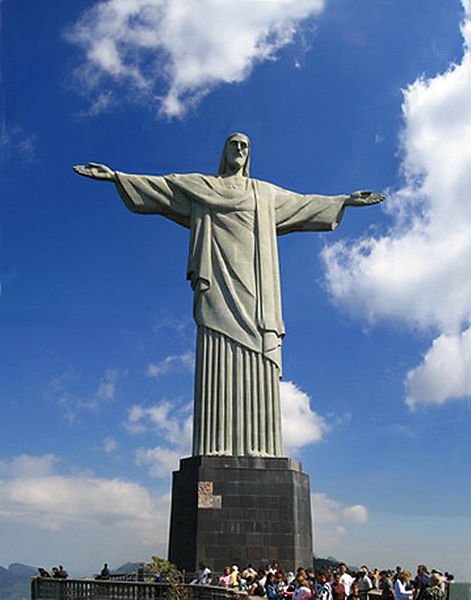 Christ the Redeemer Statue, Rio de Janeiro
Christ the Redeemer Statue, Rio de Janeiro https://commons.wikimedia.org/wiki/File:Rio_de_Janeiro_Helicoptero_47_Feb_2006.jpg
https://commons.wikimedia.org/wiki/File:Rio_de_Janeiro_Helicoptero_47_Feb_2006.jpg Mariordo
Mariordo
Christ the Redeemer, or Cristo Redentor, is a colossal 32m tall statue in Rio de Janeiro, Brazil. It sits at the top of the 710m (2330ft) Corcovado mountain, in the Tijuca Forest National Park, overlooking Rio de Janeiro.
The idea to put a statue at the top of Corcovado can be traced back to the mid 1850s, but was dismissed when Brazil became a republic in 1889, and a law was put in place separating the church from the state.
 Christ the Redeemer Statue, Rio de Janeiro
Christ the Redeemer Statue, Rio de Janeiro https://commons.wikimedia.org/wiki/File:Cristo_redentor_RJ_012.JPG
https://commons.wikimedia.org/wiki/File:Cristo_redentor_RJ_012.JPG Adriano3000
Adriano3000
It wasn't until 1921 that the idea of building a statue was revisited. This time, it was spearheaded by the Archdiocese of Rio de Janeiro, which organised a fund raising for it.
Donations came mostly from the Brazilian Catholic community. Among the designs proposed included a cross, a statue of Christ holding a globe, and a pedestal representing the world. Eventually the design of Christ with open arms was chosen. As with many structures from the 1920's, the statue was designed in the Art Deco style which was all the rage then.
The monument was sculptured by French sculptor Paul Landowski. Engineer Heitor da Silva Costa oversaw the project. The team of engineers and technicians decided to construct the statue of reinforced concrete, and clad its outer layer in soapstone, which has high resistance to extreme weather. The stones came from Limhamn, in Malmö, Sweden.
 Another view of the Christ the Redeemer Statue
Another view of the Christ the Redeemer Statue https://commons.wikimedia.org/wiki/File:Brasil.RioDeJaneiro.Corcovado.jpg
https://commons.wikimedia.org/wiki/File:Brasil.RioDeJaneiro.Corcovado.jpg Welch14
Welch14
The statue of Christ the Redeemer was inaugurated on 12 October 1932 by Brazilian president Get?lio Vargas in a lavish ceremony.
In October 2006, in celebration of the 75th anniversary of the statue, the Archbishop of Rio de Janeiro Cardinal Eusebio Oscar Scheid consecrated a chapel under the statue so that Catholics can hold baptisms and weddings there. The chapel can accommodate 150 people at any one time.
The Christ the Redeemer statue is one of the tallest statues of its kind in the world. At 38 meters, it is said to be taller than the Cristo de la Concordia statue in Bolivia, which is 34.2 meters tall. However, adding the height of its podium, the Cristo de la Concordia statue stands at 40.44 meters.
There is another statue also called Cristo Redentor at the border between Argentina and Chile. Located at a height of 3,823 m (12,539 ft) above sea level, it is almost certainly the highest such statue in the world.
On 7 July 2007, the Christ the Redeemer statue received a further recognition when it was named as one of the New Seven Wonders of the World by the Swiss-based organisation, The New Open World Corporation.
On 10 February, 2007, the statue was struck by lightning during a violent thunder storm. Although many trees in the Rio de Janeiro neighborhood were uprooted by the storm, the statue was not seriously damaged.
Reaching the Christ the Redeemer Statue
You can take a taxi right to the top, or catch the small red train that goes up the hill. Buy the tickets at Rua Cosme Velho 513. The train goes right to the foot of the statue, and you get the stunning panoramic view of Rio de Janeiro spread out before you. The journey takes 17 minutes and the train leaves every 30 minutes.At the top statue, you still need to climb the some 220 steps to reach the base of the statue. Since 2002, a flight of escalators was built to help the elderly and frail reach the top. The view at the top is simply stunning. You can see Copacabana, Ipanema, Leblon, the Botanical Gardens, and more. Evening is said to be the best time to visit, when visitors can enjoy the scenery of the setting sun. At night the scenery becomes glittering with hundred of thousands of lights illuminating the city. The most crowded time at the statue is during Easter and Christmas.
 Latest updates on Penang Travel Tips
Latest updates on Penang Travel Tips

Copyright © 2003-2025 Timothy Tye. All Rights Reserved.

 Go Back
Go Back